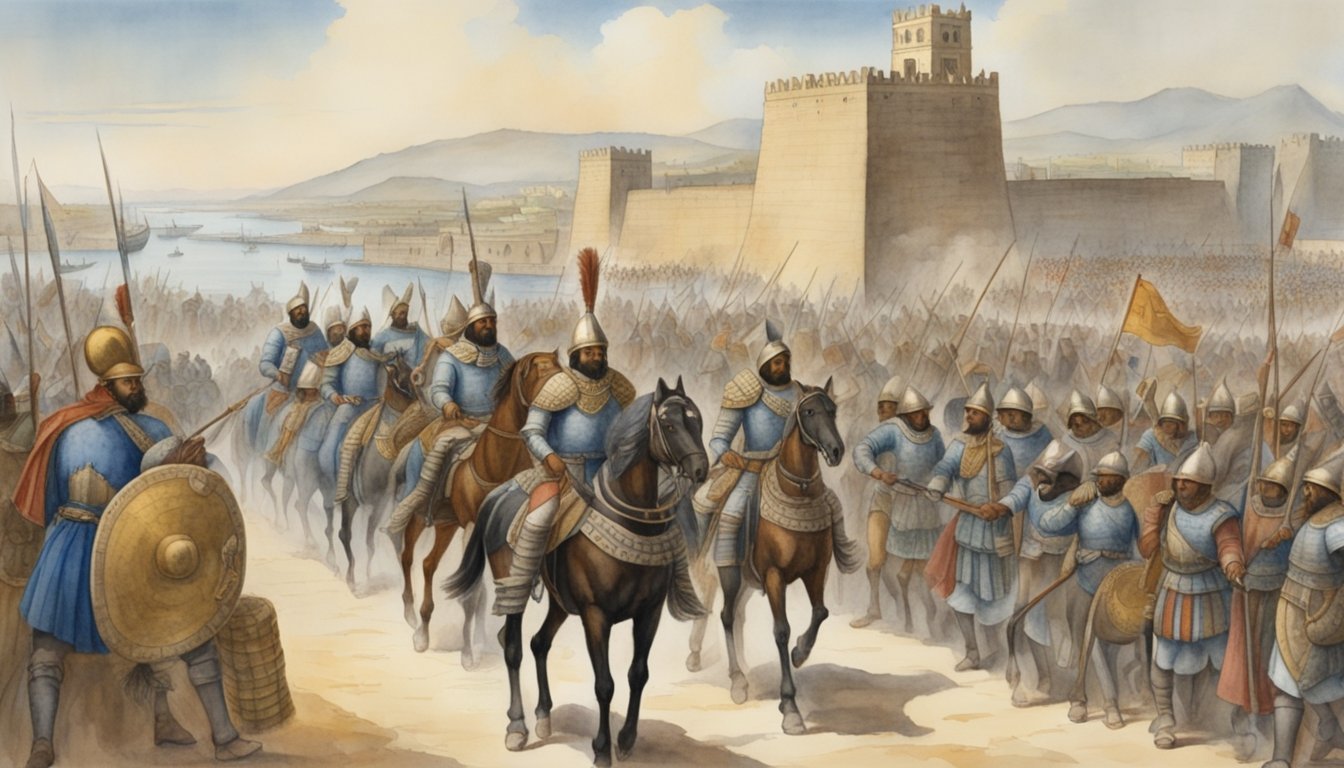The Foundation and Structure of the Aztec Empire
Geography and Origins
The Aztec Empire, also known as the Triple Alliance, was centered in the Valley of Mexico, surrounded by the Texcoco Lake. The empire was formed by three Nahua City-states: Mexico-Tenochtitlan, Texcoco, and Tlacopan. The Aztecs, originally known as the Mexica, are said to have originated from a place called Aztlán, which is believed to have been located in northwestern Mexico.
Society and Government
Aztec society was organized into city-states, or Altepetl, and was ruled by a leader known as a Tlatoani. The empire was based on a system of indirect rule, where each city-state maintained its own ruler, but the Triple Alliance collected tribute and maintained authority over the whole empire. The city-states were further divided into Calpulli, or neighborhoods, that functioned as smaller social units.
The empire was highly hierarchical. At the top of the social structure were the rulers, followed by nobles, warriors, and commoners. The society also had a strong caste system, with different roles assigned to individuals based on their birth.
Economic Practices
The Aztecs had a thriving economy that was mainly based on agriculture and trade. One unique agricultural technique used by the Aztecs was the construction of chinampas, or floating gardens. These were small artificial islands that were built in the shallow waters of Lake Texcoco, allowing farmers to grow crops on the fertile land.
Trade was integral to the Aztec economy, especially due to its access to extensive trade networks throughout Mesoamerica. Major markets within the empire were present in Tenochtitlan and Tlatelolco. Exports from these centers included textiles, pottery, jewelry, and tools.
Religious Beliefs and Temples
Aztec religion was polytheistic, with numerous gods and goddesses representing various aspects of nature and human life. Some of the most important deities included Huitzilopochtli (god of the sun and war), Tlaloc (god of rain and fertility), and Quetzalcoatl (god of wind and knowledge).
Temples played a significant role in Aztec religious practices. The Templo Mayor in Tenochtitlan was the main religious center, dedicated to Huitzilopochtli and Tlaloc. The temple was also the site of various religious ceremonies, such as human sacrifices, which were conducted as an offering to the gods to maintain balance in the universe.
Cultural Aspects and the Spanish Conquest

Daily Life and Social Structure
The Aztec society was organized into three main classes: nobles, commoners, and slaves. Nobles held governmental and religious positions, while commoners were the farmers, artisans, and merchants. Slavery was also prevalent, with slaves working in households or as laborers. Agriculture was the foundation of Aztec life, with maize, beans, and squash serving as the staple crops. The Aztec people also engaged in trade and required city-states within their empire to pay tributes, such as gold, textiles, and food.
Arts, Architecture, and Aztec Calendar
Aztec art was primarily focused on religious themes and their connection to the natural world. Both their architecture and sculpture were characterized by intricate motifs and bold colors. Major architectural examples include the Templo Mayor and the Great Pyramid of Tenochtitlan. The Aztec calendar was equally significant to their culture, consisting of a 365-day solar calendar and a 260-day ritual calendar, creating the sacred 52-year cycle.
Warfare and Military
Aztec warfare was deeply connected to their religious practices, as they believed that capturing enemies for human sacrifices would please their gods. Elite warriors, known as Eagle and Jaguar Knights, used weapons primarily made of obsidian which were both effective and sacred. Some of the most important deities in the Aztec pantheon included Quetzalcoatl (Feathered Serpent), Huitzilopochtli (Sun and War god), Tlaloc (Rain god), and Tezcatlipoca (Smoking Mirror).
Fall of the Empire
The fall of the Aztec Empire began with the arrival of Spanish conquistadors, led by Hernán Cortés in 1519. Aided by alliances with disgruntled city-states, superior weaponry, and the devastating impact of smallpox, Cortés and his forces eventually captured the Aztec emperor, Montezuma II, and later his successor, Cuauhtémoc. The capital city of Tenochtitlan fell in 1521, leading to the Spanish conquest of the empire and the eventual assimilation of Aztec lands into the Spanish colonial territories.

